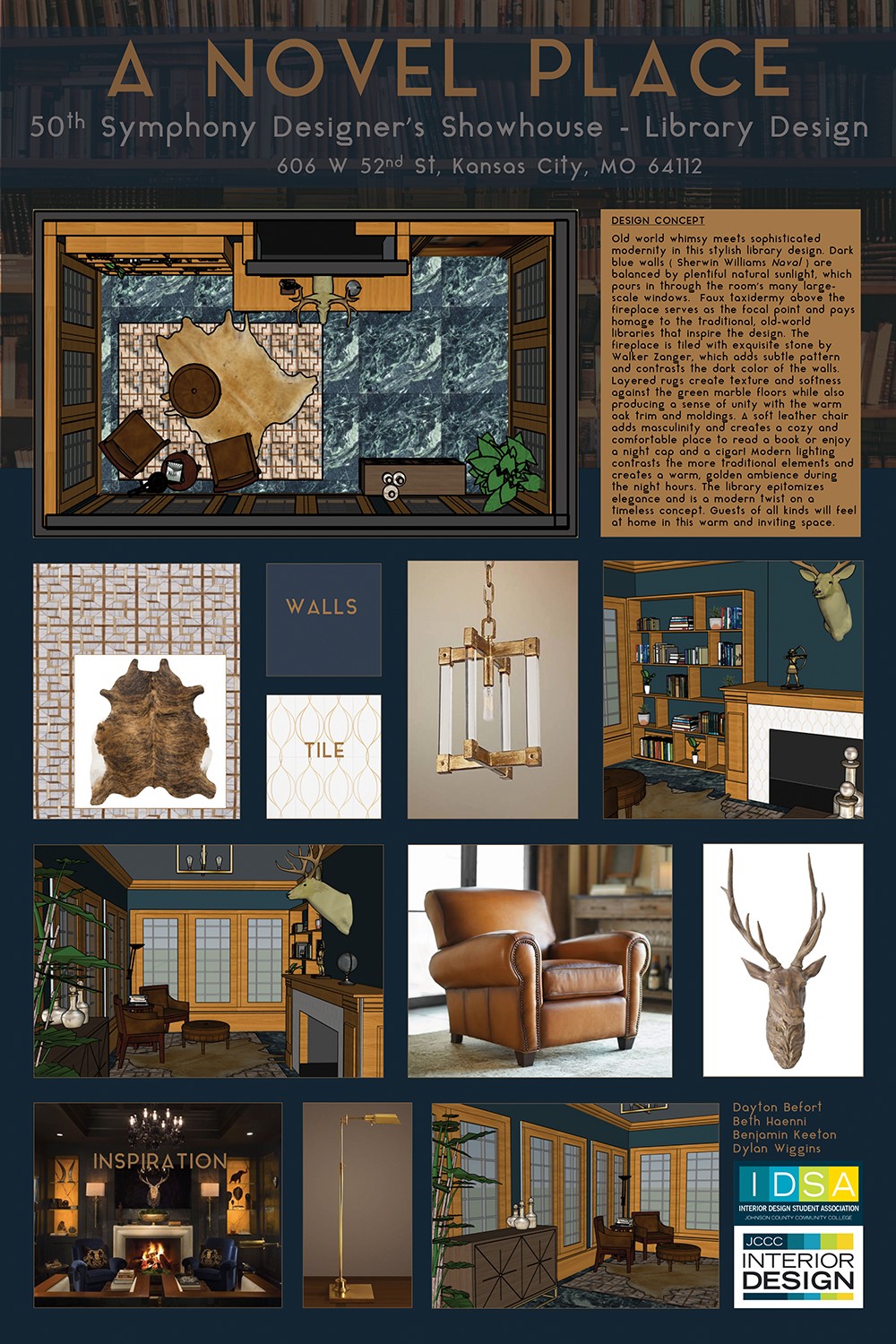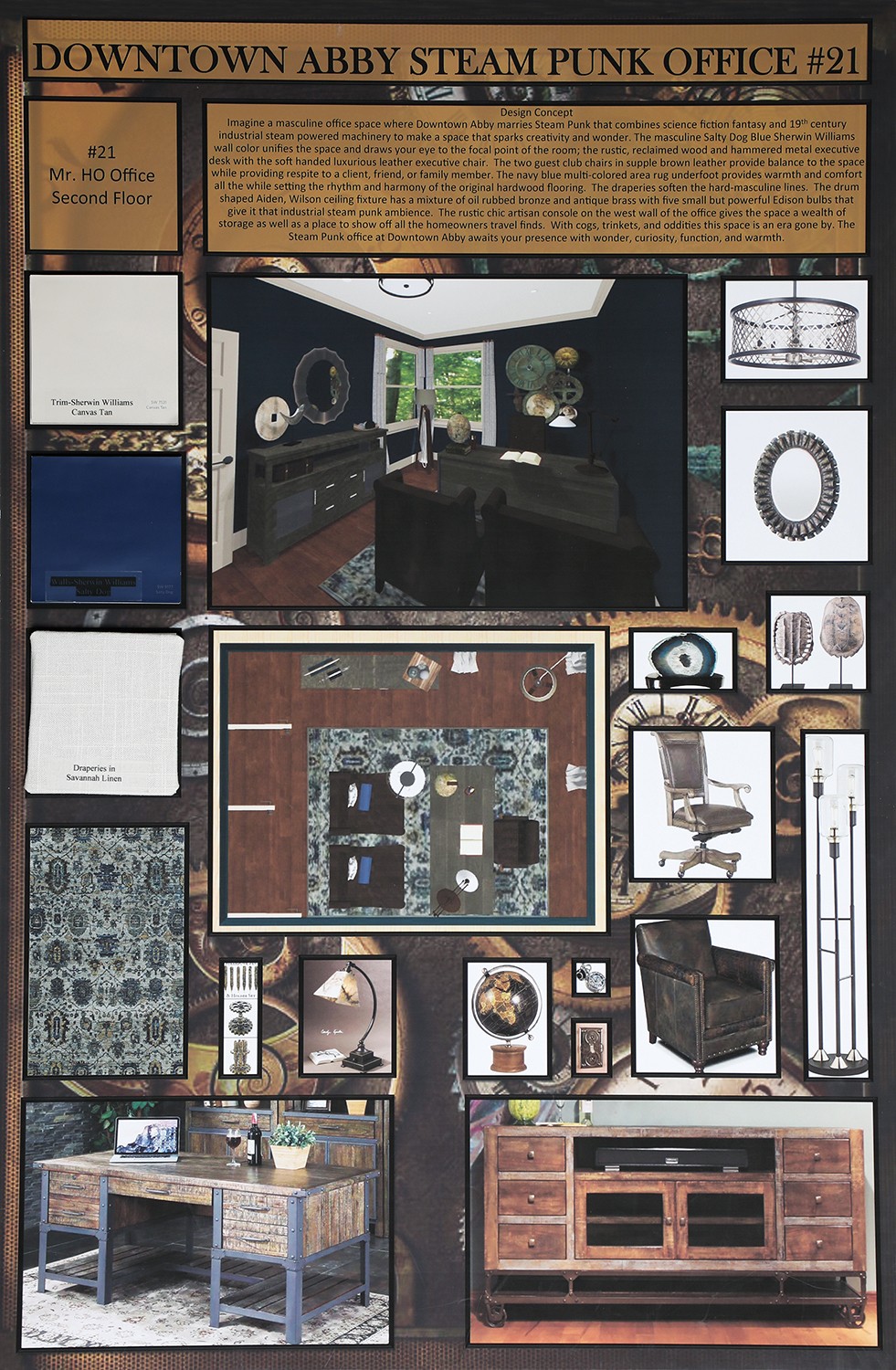50 marks the milestone for this year’s KCSA Showhouse and JCCC
Story by Ann Butenas
Fifty majestic Kansas City homes have had the spotlight shine upon them; the honor of being chosen as a Kansas City Symphony Alliance Designers’ Showhouse. As the wheels are in motion for this year’s 50th Showhouse tour, Johnson County Community College (JCCC) is also celebrating the same milestone this year, marking its 50th anniversary of helping thousands of students achieve their educational goals and dreams through innovative programs and opportunities.
For the past 34 of those 50 years, students in the Interior Design program have been among those given such an opportunity. Select talented individuals have given of their time and talent by designing one of the rooms in each of the Showhouse tours.
According to Bobanne Kalkofen, NCIDQ, ASID, IIDA, MLA, Professor and Chair of the Interior Design program at JCCC, students are provided “real world” connections through the program and select interior design students are provided an opportunity to redesign a room in the KC Symphony Designers’ Showhouse. This takes hundreds of hours of planning and tremendous work on the students’ part, and includes a rigorous design process through which all designers must go, professional or student, not only for the Showhouse project but also for “real life” projects. Further, this opportunity is sponsored by the Interior Design Student Association (IDSA) at JCCC, and they are the ones who raise the funds to help bring this project to fruition.
Story board for the 2019 Showhouse
With this year’s Showhouse, the selected students are designing the library. They have spent copious hours diving into all layers of the project, from obtaining initial quotes to purchasing materials and overseeing the installation. It is a full-time job coordinated simultaneously with their classwork, but it truly is a labor of love for them.
According to Kalkofen, the detailed design process begins with the project planning phase, which is the initial phase that gives the designers insight as to whether or not they can take on the work and if it is an appropriate match. From there they transition to programming, which involves interviews with the client, surveys and general observations.
“For the Symphony Showhouse, this is done by the Symphony committee, as they have guidelines for all the house designers to follow,” noted Kalkofen.
From there, the schematic design part comes into play. This involves the layout of ideas for furniture and placement. For example, in the library of this particular Showhouse, the students have to consider the overall use of the room and the traffic flow of the space.
Next is design development which calls for measuring the space and considering the room to bid on, taking into consideration what design plan gives the client a good solution, design impact and is within the allocated budget.
“This is the point where the student designers, like the professionals, find vendors and products to use, put together a design board and 3-D views of the room in full color for the Symphony committee to consider,” explained Kalkofen.
Once the client agrees to the project, the designer moves into contract documentation and administration, following through on all aspects, ensuring deliveries are made and coordinate all facets of the project. Once completed, the project is evaluated, and this circles back into project planning once again.
Most important, however, is the post-occupancy evaluation, which is conducted between the designer and the client and focuses on any issues that might need addressing.
Story board from the 2017 Showhouse and finished room on the intro image
“This allows designers to learn from what they did well and to understand what they can improve upon and take to the next job,” said Kalkofen.
Kathryn Grube, MID, NCIDQ, LEED AP ID+C, Associate Professor and Advisor to the Student Chapter, added, “All of the interior design students who participate in this event love the entire experience, including rubbing elbows on site with other interior design professionals, going to meetings and invitation-only promotional events, and watching their design visions come to life. This is a great way to showcase our students and our interior design program here at JCCC, as well as give student designers an opportunity to network and be recognized for their hard work among those who will ultimately be their future employers.”
Kalkofen, Grube and the entire JCCC Interior Design program credit the vibrant design community and industry professionals in Kansas City with welcoming these students and giving them a platform to highlight their skills and are equally supportive of the phenomenal avenues at JCCC through which students can successfully navigate the path from the classroom to professional designer status.
“We couldn’t be as successful as an interior design career program as we are without our dedicated students,” expressed Grube. “The faculty are so very proud of the creativity and immense leadership efforts put forth from our interior design students for this event. Their creativity and skill sets taken from the classroom truly shine for all to see. They are inspiring, and that’s one of the most rewarding things that can happen as a college professor: seeing all the hard work pay off and watching them grow, flourish and fly.”








